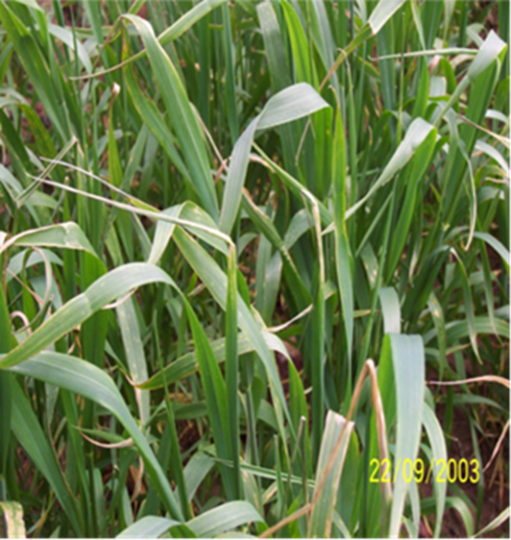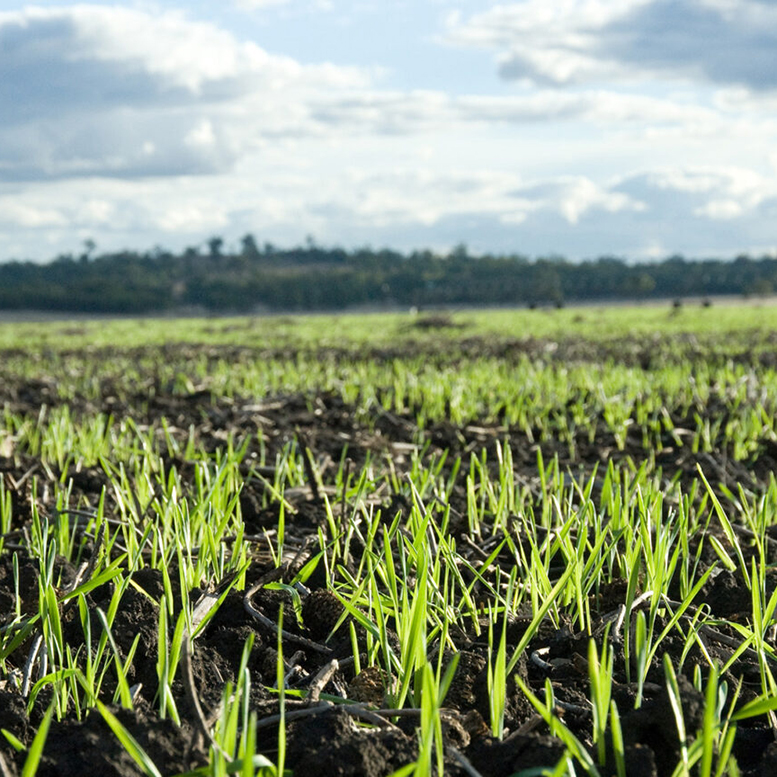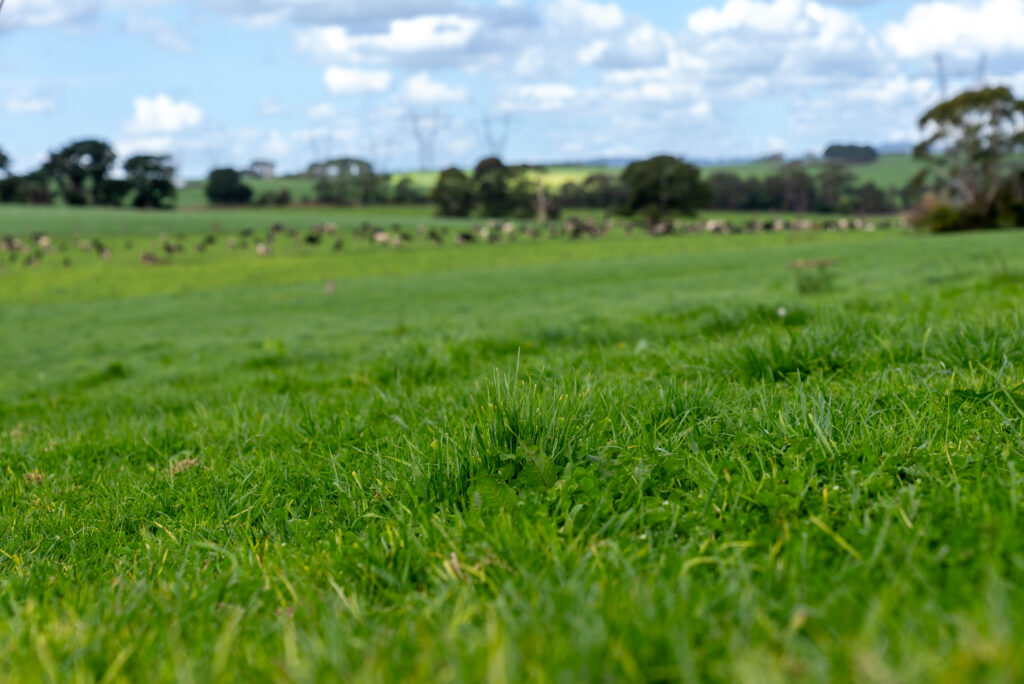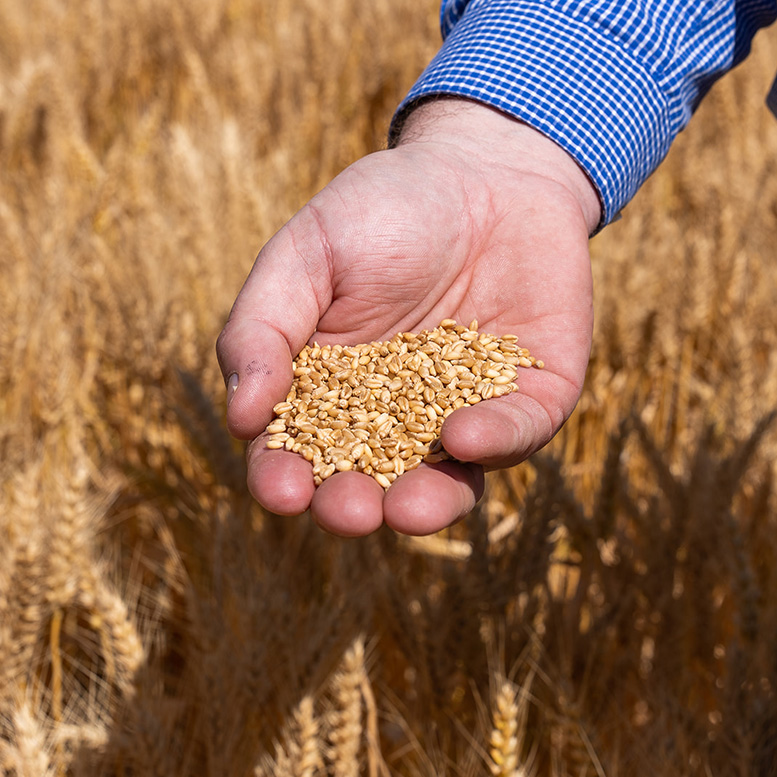Agronomic Insights

Jim Laycock – IPF Technical Agronomist
Of all the essential micronutrients or trace elements, molybdenum is required in the smallest amount by plants. We understand the importance of molybdenum in pasture systems but where does it fit in a wheat, canola, grain legume crop program?
In the soil
Molybdenum is the least abundant of the trace elements in soils and very little is present in forms that are available to plants.
The parent rock from which soils are formed varies in its molybdenum content, so soils in the same district or paddock can be equally variable in their molybdenum levels.
The availability of molybdenum to plants is affected by several factors, including chemical form of Mo in the soil, soil pH and the level of other soil nutrients. Acid soils and those with a pH of less than 5.5(CaCl2) are more likely to be deficient in molybdenum. Molybdenum is the only micronutrient that has increased plant availability as the soil pH rises.
Nutrient Advantage does not analyse soils for plant-available molybdenum, nor is it a common method elsewhere in the world due to a lack of reliability. Plant tissue analysis gives a much better guide to levels of plant-available molybdenum.
Why is tissue testing important?
- to confirm micronutrient deficiencies
- to monitor the effect of the current nutrient management program
- to identify emerging deficiencies before they impact yield
- to identify luxury or toxic levels of macro and micronutrients
Molybdenum can be included in the analysis by Nutrient Advantage by selecting test code PT2 when sending plant samples for testing.
In the plant
Molybdenum is important in nitrogen metabolism, and the synthesis of protein. Plant uptake of molybdenum is as the molybdate (MoO42) ion.
It is important to know how much molybdenum is being applied in the cropping rotation, and particularly to understand the potential for increased molybdate availability after liming.
Molybdate solubility increases approximately 100 times for every unit increase in soil pH, so there is the potential to impact the nutrient balance in wheat and canola.
In legumes, a lack of molybdenum prevents proper nodulation and fixation of molecular nitrogen (N2), by symbiotic Rhizobium bacteria.
Symptoms of nitrogen deficiency are displayed by the plant. Growth is stunted and nodulation is poor. The root nodules are green or colourless, not the typical healthy pink colour.
Symbiotic bacteria require about ten times more molybdenum for nitrogen fixation than does the host plant (for protein synthesis). In non-legume plants, symptoms specific to molybdenum deficiency occur, although plants suffer essentially from a shortage of protein, due to the failure to convert nitrate (NO3-) to amino acids. Of the non-legume plants, canola has a high molybdenum demand.
Molybdenum and copper
High levels of molybdenum in soil can interfere with the uptake and use of copper by plants. Molybdenum can form complexes with copper, making it less available to the plant to absorb. This can lead to a copper deficiency especially when soil copper levels are marginal at <0.3mg/kg DTPA. The table below provides a guide to critical levels of copper and molybdenum in wheat.
Table 1: Critical levels of molybdenum and copper in wheat (mg/kg). Source: Reuter and Robinson, 1997

Sampling youngest emerged leaf blades in wheat at Zadocks 49 at an IPF trial site in 2022 identified deficient copper and high molybdenum levels in tissues with no apparent copper deficiency symptoms.

It is important to understand the effects of higher availability of soil molybdenum after liming or higher than recommended rates of molybdenum application to avoid the potential of limiting uptake of copper in wheat.
Molybdenum and sulphur
Uptake of molybdate may be reduced by the presence of sulphate (SO42-) ions, which are much the same size as molybdate ions and have the same charge.
Where high rates of sulphur have been applied in front of canola there is the potential to induce molybdenum deficiency. Conversely where there are high levels of molybdenum in soils the activity of
enzymes involved in sulphur metabolism are disrupted and may lead to a shortage of available sulphur to the plant.
The table below provide a guide to critical levels of sulphur and molybdenum in canola.
Table 3: Critical levels of molybdenum and sulphur in canola (mg/kg). Source: Reuter and Robinson, 1997.

The relationship between molybdenum and sulphur is complex and depends on the specific conditions of the soil and plant. Factors such as pH, the availability of other nutrients, crop type and even crop variety can also affect the response to high molybdenum availability in soils.
To ensure plants are getting the right balance of nutrients they need to be productive, regular soil testing and proactive tissue and grain testing is recommended.
References
Reuter, D.J. and J.B. Robinson (Eds), 1997: Plant Analysis: – an interpretation manual (2nd Edition), CSIRO Australia.
Brennan, R.F. and M.D.A. Bolland, 2006: Soil and tissue tests to predict the sulphur requirement of canola in south-western Australia, Aust. J. Exp. Agric. 46, 1061-1068.
Kaiser BN, Gridley KL, Ngaire Brady J, Phillips T, Tyerman SD. The role of molybdenum in agricultural plant production. Ann Bot. 2005 Oct;96(5):745-54. doi: 10.1093/aob/mci226. Epub 2005 Jul 20. PMID: 16033776; PMCID: PMC4247040.
Chitralekha Chatterjee & Nirmala Nautiyal (2001) MOLYBDENUM STRESS AFFECTS VIABILITY AND VIGOR OF WHEAT SEEDS, Journal of Plant Nutrition, 24:9, 1377-1386, DOI: 10.1081/PLN-100106988
Brennan R. F. (2006) Residual value of molybdenum for wheat production on naturally acidic soils of Western Australia. Australian Journal of Experimental Agriculture 46, 1333-1339. https://doi.org/10.1071/EA05101
Snowball K Robson AD (1984) Comparison of the internal and external requirements of wheat, oats and barley for copper. Australian Journal of Agricultural Research 35, 359-365. https://doi.org/10.1071/AR9840359
Gartrell, J W.; Brennan, R. F.; and Robson, A. D. (1979) “Symptoms and treatment of copper deficiency of wheat,” Journal of the Department of Agriculture, Western Australia, Series 4: Vol. 20: No. 1, Article 7.
Available at: https://researchlibrary.agric.wa.gov.au/journal_agriculture4/vol20/iss1/7
https://www.agric.wa.gov.au/mycrop/diagnosing-copper-deficiency-wheat
Further information
For more information, please contact Jim Laycock on 0427 006 047 or email jim.laycock@incitecpivot.com.au
Resources
DOWNLOAD INSIGHTDISCLAIMER
This is a guide only, which we hope you find useful as a general tool. While IPF has taken all reasonable care in the preparation of this guide, it should not be relied on as a substitute for tailored professional advice and IPF accepts no liability in connection with this guide. Incitec Pivot Fertilisers manufactures and sources fertilisers from other suppliers. The fertiliser supply chain extends beyond the company’s direct control, both overseas and within Australia. Incitec Pivot Fertilisers hereby expressly disclaims liability to any person, property or thing in respect of any of the consequences of anything done or omitted to be done by any person in reliance, whether wholly or in part, upon the whole or any part of the contents of this article.
You might also be interested in these

Summer Crop, Winter Crop
EASY N: Enhanced nitrogen means better productivity this season
April / 2025

Pasture, Winter Crop
Potassium’s pivotal role
September / 2023

Winter Crop
Beating the cold: How to maximise your winter pasture performance
May / 2025

Winter Crop
Grain testing gives complete picture on nutrient levels
November / 2024

